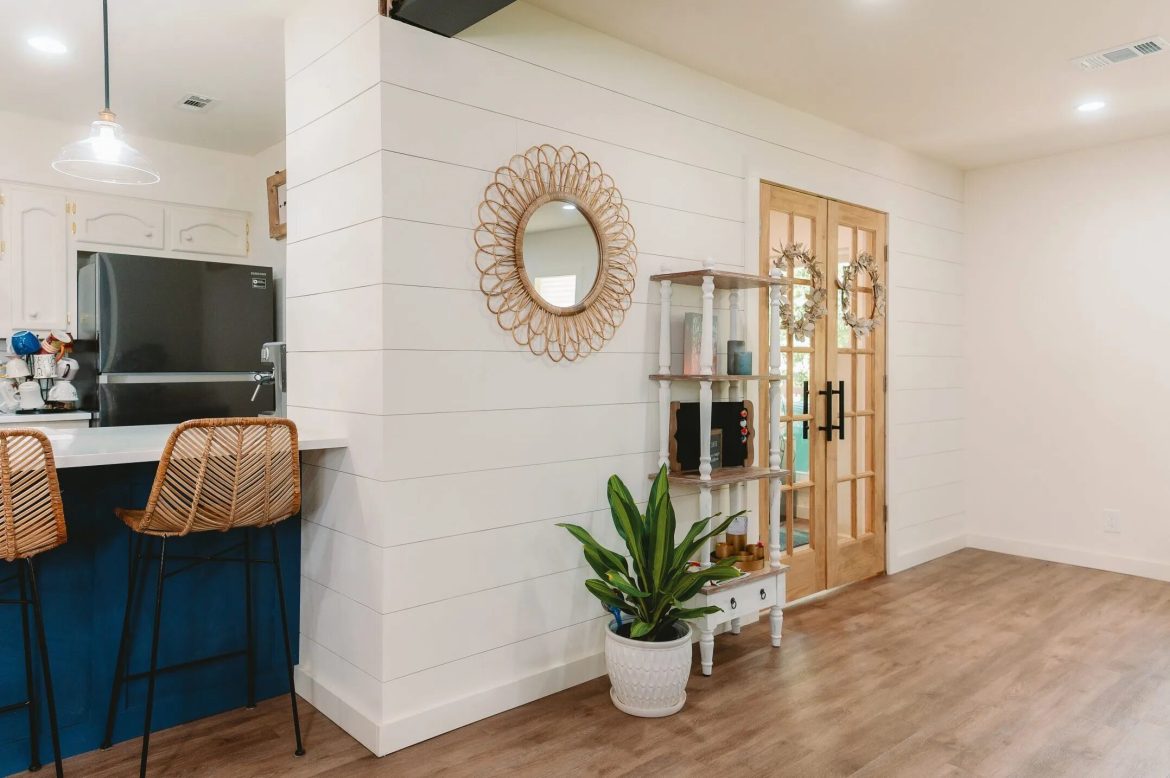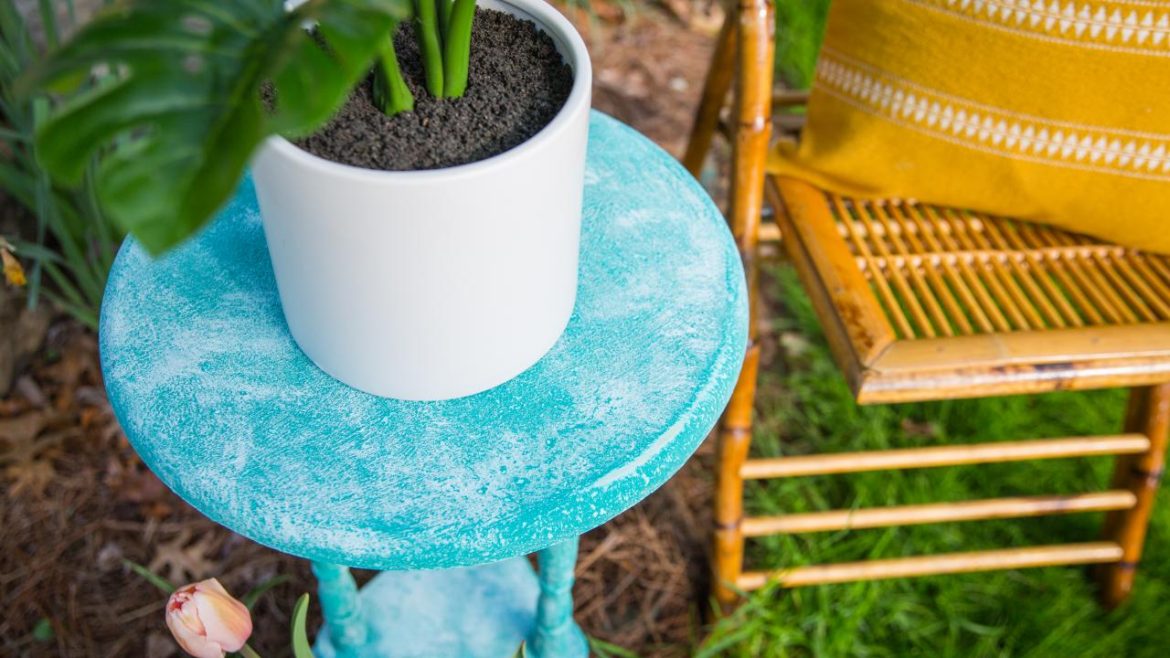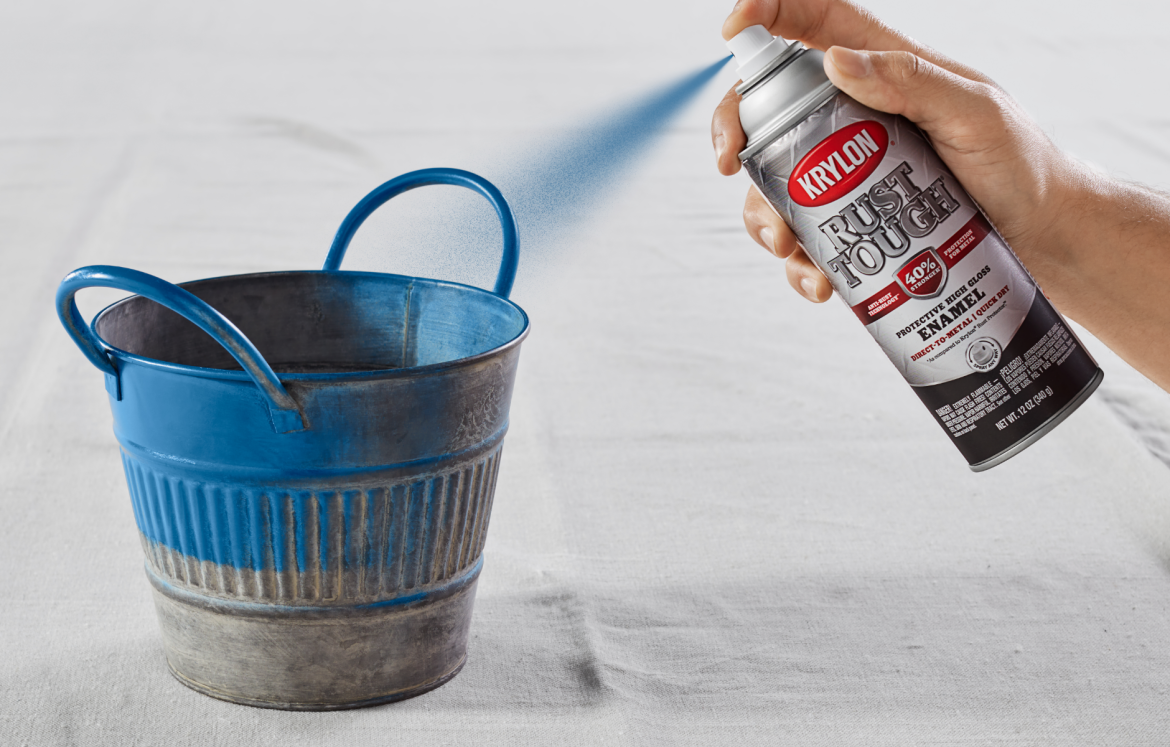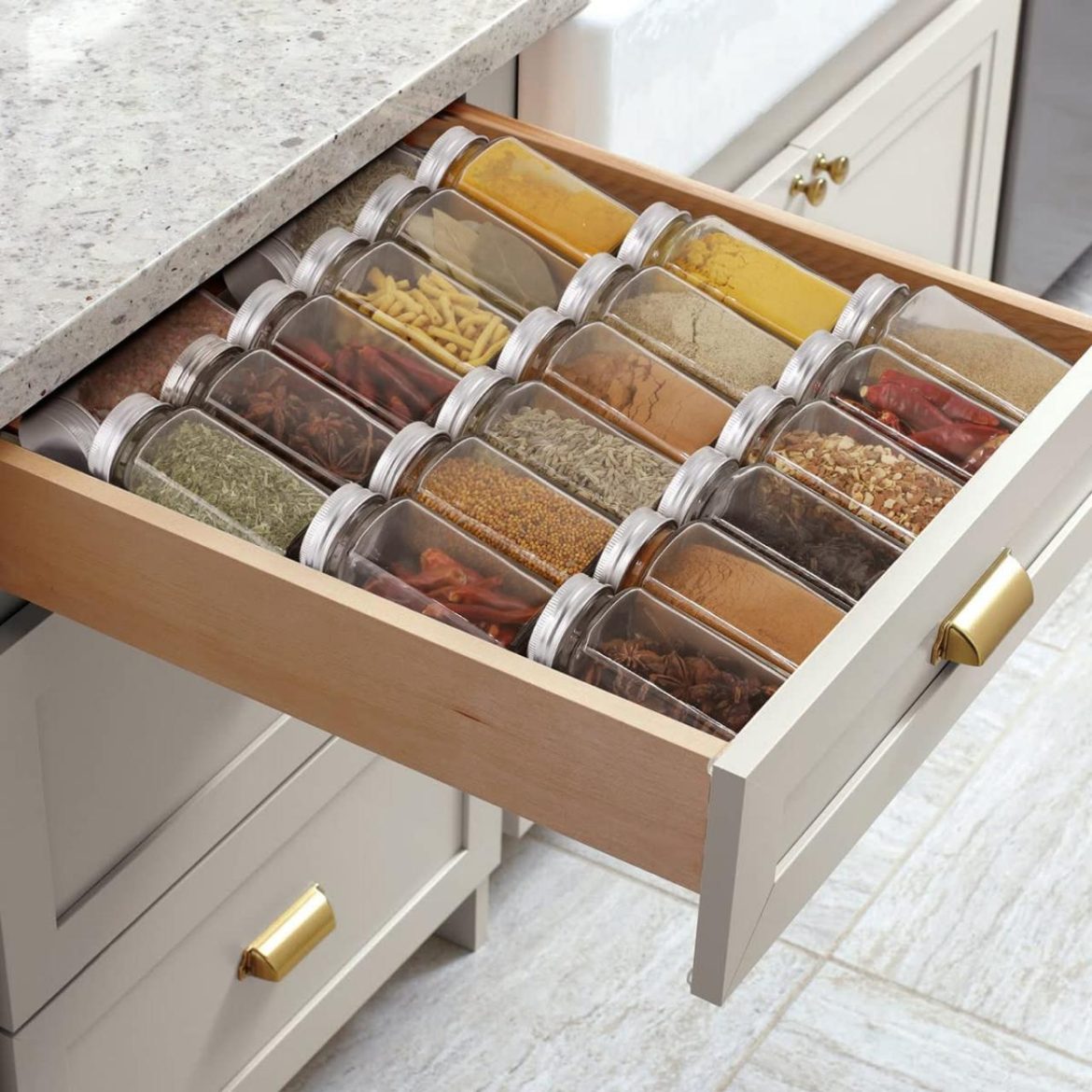Many paint colors in the world make our lives colorful. But there are some colors that we don’t know about, or if we know, we know a little. One such color is Rustoleum Chalked Paint. We’ll see a quick chalked paint review on the same, and we will get to know what is so special about that, how it makes our furniture look amazing, and many more.
Rustoleum Chalked paint review is a type of paint that lots of people are talking about. It’s not like your regular paint, which makes it special. It can help you make old furniture look brand new, and it does it in a pretty cool way. So, to give your furniture the best look and color it deserves or how you want it to, you should know all of this. It is the kind of paint color that is not so hard to understand.
So, understand all about this amazing paint color and give your furniture a look that they never had.
1. About Rust-Oleum and Chalked

Rust-Oleum, a company with a rich history dating back to its founding in 1921, has become a trusted name in the fields of paint and coatings. Initially inspired by a sea captain’s observation regarding the protective properties of fish oil on metal surfaces, the company started many innovations in rust-preventive solutions. Over the decades, Rust-Oleum has evolved to offer various products catering to various surfaces and applications.
Within their extensive product line, Rust-Oleum introduced Chalked, their take on chalk-style paint. This paint, named Chalked, shows the company’s commitment to providing high-quality, user-friendly solutions for DIY projects. With the help of chalked paint review, it is connected to Rust-Oleum’s legacy of innovation and excellence, offering consumers a flexible and accessible option for achieving the desired finish on their furniture and decor.
2. Chalk Paint History and Annie Sloan

The history of chalk-style paint traces back to Annie Sloan, an expert in decorative painting. In the 1990s, Annie Sloan introduced her version of chalk-style paint, aptly named Chalk Paint. Notably, this term was trademarked by her company, resulting in other paint manufacturers using alternative names for their versions of chalk-style paint. This trademark proves the impact of Annie Sloan’s innovation and the popularity of chalk-style paint.
Annie Sloan’s creation changed the painting industry by offering paint that required less preparation, allowing users to remove unwanted sanding or priming processes. This breakthrough made decorative painting accessible to a wider audience, empowering both amateurs and professionals to change furniture and decor with ease.
3. Background of This Amazing Color

Rust-Oleum’s origins were created in the deep observation of a sea captain named Robert Fergusson, whose encounter with fish oil’s rust-preventing properties gave him an awesome idea. This important moment led to the developing of one of the world’s earliest rust-preventive paints. Established in 1921, Rust-Oleum quickly gained recognition as a leading innovator in protective coatings for metal surfaces. The company’s dedication to quality and effectiveness enabled it to the forefront of the industry.
Over the past decades, Rust-Oleum expanded its product offerings to have a diverse range of solutions for various surfaces and applications. The company’s commitment to innovation and excellence remained exceptional, ensuring that Rust-Oleum products continue to meet the evolving needs of consumers across the globe. Among their many product lines, Rust-Oleum introduced Chalked, a chalk-style paint designed to provide users with a flexible and user-friendly option for achieving desired finishes on furniture and decor.
4. Benefits of Chalk-style Paint

Chalk-style paint, like Rustoleum Chalked, offers many advantages that make it a popular choice among fans and professional furniture refinishers.
- Its flexibility is a unique feature, allowing it to be used on various surfaces, from wood to metal, glass, and even ceramic. This adaptability makes it a go-to option for various projects, providing a user-friendly experience regardless of the material.
- One of the best qualities of chalk-style paint is its matte finish. This finish has a different vintage or country aesthetic to furniture and decor, adding character and beauty to each piece. It’s this unique characteristic that draws many to choose chalk-style paint over traditional options.
- Also, the matte finish has a subtle beauty that complements various interior design styles, from simple to farmhouse style, offering an amazing look that everyone loves.
- And chalk-style paint simplifies the painting process by removing the need for extensive prep work. Unlike some other types of paint, which may require sanding or priming before application, chalk-style paint adheres well to surfaces with less preparation.
5. Using Chalk Paint on Furniture

Applying chalk paint to furniture is a simple process that requires very little preparation. After ensuring that the surface is clean and free of dust or debris, you can begin painting directly. Unlike some other types of paint, which may demand large sanding or priming, chalk-style paint sticks well to surfaces with a smooth finish. For furniture with glossy or particularly smooth surfaces, light sanding is recommended to improve paint adhesion. This step provides a slightly simpler surface for the paint to grip, ensuring a better overall finish and coverage.
While the additional sanding step may be necessary in certain cases, it doesn’t complicate the application process, making chalk-style paint a convenient choice for projects. It’s worth noting that chalk-style paint is known for its awesome nature, as mentioned in this chalked paint review. Even if you make a mistake or apply the paint unevenly, it can be easily corrected. Simply add more paint to the affected area, allow it to dry, and continue with the painting process.
6. Picking the Right Chalk Paint

Choosing the best chalk paint for your project involves considering several factors to ensure the best results. Factors such as color, availability, and coverage should be considered. Different brands offer varying options, and conducting research to determine which paint aligns with your project’s requirements is important. For instance, some paint companies may not offer chalk paint in a spray can format. If you want to use chalk paint for projects that require a spray application, this consideration will be important.
7. Cost of Rustoleum Chalked

Rustoleum Chalked is an affordable option among chalk-style paints, making it an excellent choice for budget-conscious people. The price range is accessible, allowing individuals to start their creative projects without exceeding their budget constraints. This affordability extends across various sizes and colors, ensuring that Rustoleum Chalked caters to various project scopes and preferences.
By using chalked paint review, it does not matter if you’re working on a small craft project or tackling a larger furniture restoration; Rustoleum Chalked provides a cost-effective solution without compromising on quality.
8. Why People Like Chalk Paint

The popularity of chalk-style paint, including Rustoleum Chalked, is underpinned by its exceptional user-friendliness and flexibility. Unlike some other types of paint, which may necessitate extensive preparation such as sanding or priming, chalk-style paint minimizes the pre-painting process. This simplicity makes it accessible to both beginners and experienced painters, offering an easy way to renovate furniture and decor. Also, chalk-style paint has a remarkable ability to hide minor imperfections in surfaces. This quality is highly valued by those working with older or well-loved pieces of furniture, as it not only adds to the beauty but also makes the painting process easier.
Some imperfections in the surface can contribute to the overall beauty of the finished piece, particularly for individuals looking for a shabby chic, vintage, farmhouse, or country aesthetic. By using ideas from chalked paint reviews, the matte finish achieved with chalk-style paint is another key factor in its amazing look. This finish has a different and awesome to furniture and decor. It complements various interior design styles, ensuring that pieces painted with chalk-style paint can easily mix into diverse home settings. The matte finish shows a subtle beauty that includes passing trends, contributing to its enduring popularity in the world of decorative painting. You should use wax sealers to seal the paint.
9. How Well Does Chalked Paint Cover?

Rustoleum Chalked paint offers a decent level of coverage, which is necessary for achieving a smooth and even finish on your projects. However, it’s important to note that the thickness of this paint may differ from some other chalk-style options. As a result, in most cases, you’ll find that applying at least two coats is necessary to achieve the desired coverage.
Allowing enough drying time between coats is important for the best results. This step ensures that each layer properly sticks to the surface and dries to a consistent finish. When you use chalked paint review while applying multiple coats, it may require more time. The result is well worth the effort, as Rustoleum Chalked then provides a beautiful matte finish that is better than other brands in terms of quality and appearance.
10. Chalked Paint Works on Many Surfaces

One of the remarkable characteristics of Rustoleum Chalked paint is its exceptional quality of adaptation. It mixes effectively with any type of surface, including wood, metal, glass, ceramic, and more. This wide-ranging compatibility makes it a go-to option for various projects, as it can be applied to different materials without sacrificing quality or performance. While chalk-style paints typically offer excellent quality, it’s important to note that some surfaces may benefit from light sanding according to application.
This step helps create a slightly rougher texture, giving the paint a better grip. By following this simple preparation process with the help of chalked paint review, you can ensure that Rustoleum Chalked paint achieves better results on your chosen surface.
11. Adding Protection for Long-lasting Results

To improve the durability and long life of your chalked paint project, applying a sealant is an important final step. Rustoleum recommends their Ultra Matte Top Coat for this purpose. This top coat adds a protective layer that safeguards your painted items from wear and tear, ensuring that they maintain their beautiful finish over time.
It’s important to note that when applying the top coat, a light touch is recommended. Applying thin coats helps prevent any uneven feel in the finish. By taking this extra step to protect your project, you can enjoy the lasting beauty and quality that Rustoleum Chalked paint provides. You should use a sponge paintbrush for more convenience.
12. Pros and Cons Rustoleum Chalked Paint

Pros
Rustoleum Chalked paint has several notable advantages that make it a favored choice among DIY people and professional painters.
- One of its main strengths lies in its affordability. Among chalk-style paints, Rustoleum chalk stands out as one of the most economical options available on the market. This accessibility ensures that people with different budgets can start on their creative projects without compromising on quality.
- In addition to affordability, Rustoleum Chalked paint is widely available. It can be found in various retail and hardware stores, including popular destinations like Lowes, Walmart, and Amazon. This widespread availability ensures that consumers have convenient access to this amazing paint, allowing them to start their projects with ease.
- And Rustoleum Chalked offers an impressive selection of colors. While it comes in pre-mixed shades, the 30-ounce can of Rustoleum Chalked Ultra Matte Paint Tint Base opens up the possibility for custom color creation.
Cons
While Rustoleum Chalked paint offers many benefits, it’s important to consider some of its limitations and factors to keep in mind.
- One consideration is the paint’s thinner consistency compared to certain other chalk-style options. As a result, achieving full coverage may require applying multiple coats. This aspect should be taken into account when planning your project timeline.
- Another consideration is the necessity of applying a sealant to ensure the longevity of your finished piece. Like many chalk paints, Rustoleum chalk benefits from the additional protection provided by a sealant.
- Following this step is important for preventing degraded quality or wear over time and ensuring that your painted items maintain their beauty and quality.
- Finally, color availability may vary depending on your location and the retail stores in your area. If you’re looking for a specific color or shade, you should check with local retailers or inquire about custom color mixing services.
13. Colors in Rustoleum Chalked Paint

One of the standout features of Rustoleum Chalked Paint is its vast color range, offering a wide selection of options to suit diverse tastes and preferences. Whether you’re looking for soft, neutral tones or bright, dark shades, you will likely find the perfect color to complement your project. This variety allows for creative expression and ensures that you can achieve the exact look that you want.
In addition to pre-mixed colors, Rustoleum Chalked also provides the option to create custom shades. This service is available at select retail locations, allowing you to make the paint to your specific project requirements. The ability to access many colors helps you to bring your creative ideas into your work, making Rustoleum Chalked a good choice for a wide range of projects.
14. Where to Find

Rustoleum Chalked paint is always available at various retail and hardware stores, making it easily accessible to consumers. You can find it at well-known retailers like Lowes, Walmart, and Amazon, providing convenient options for purchasing this awesome paint. Also, some local hardware stores may carry Rustoleum Chalked, though availability may vary by location. By finding these options, you can get the paint you need for your creative projects and enjoy the exceptional benefits it offers. So, finding is not a hard thing; what matters the most is that you should choose the best color according to your needs.
Conclusion
Rustoleum Chalked paint is a standout choice for many projects and furniture restoration. Its affordability, widespread availability, and vast color selection make it a flexible option for various creative ideas. The matte finish achieved after two coats shows an amazing beauty to furniture and decor, improving their looks.
Rustoleum Chalked fast-drying nature ensures that projects can be completed efficiently, allowing you to enjoy the results of your efforts sooner. The paint’s excellent capabilities open up chances to create the best of the best according to your ideas, and hence, you get better results by using the chalked paint review.
With Rustoleum Chalked, you have the tools you need to turn your creative ideas into reality and improve the beauty of your living spaces.









































































































